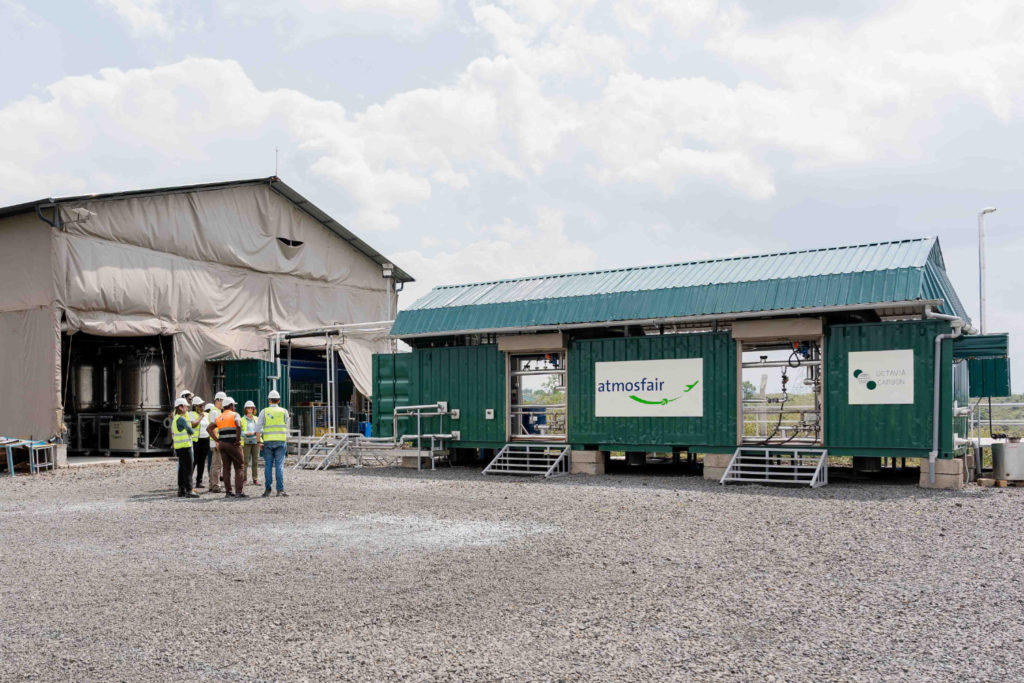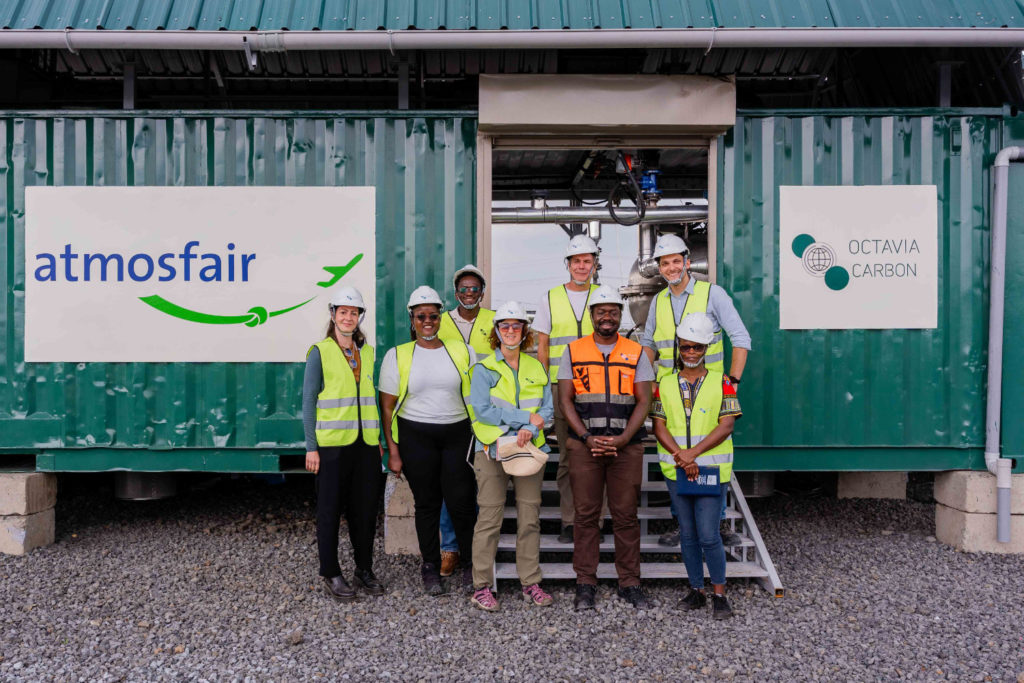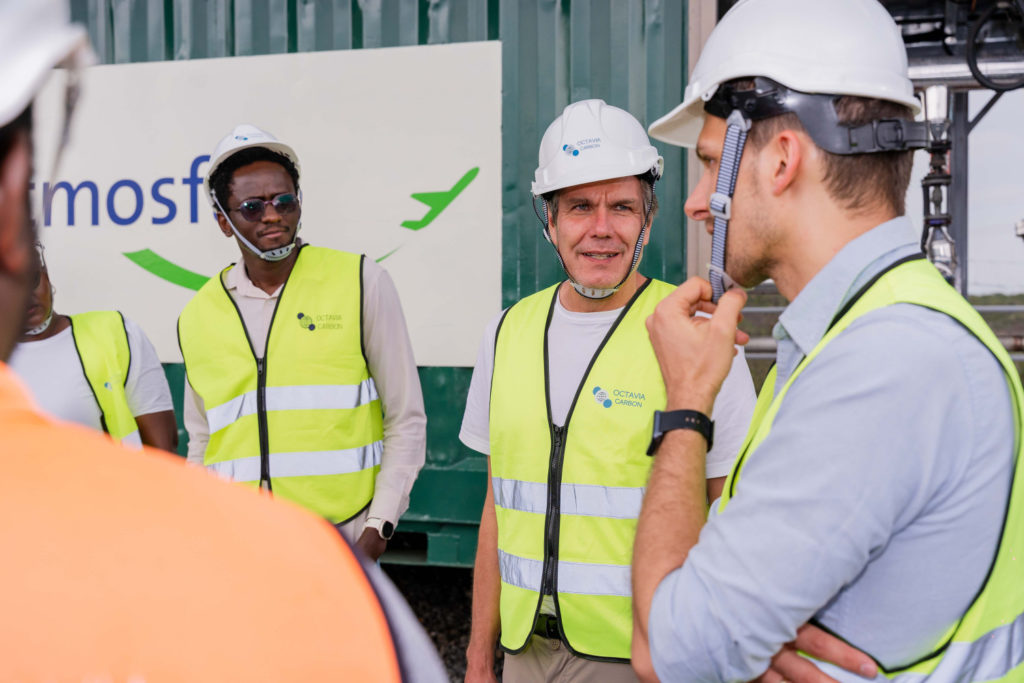Elementaita Lake, Kenya, September 2025. atmosfair is building its first Direct Air Capture (DAC) unit through Octavia Carbon. The unit is already in operation and actively extracting CO₂ from the air which will be stored in underground basalt layers starting from 2026. Octavia Carbon, our local partner for the project, is a DAC technology developer based in Nairobi, that is leveraging the country’s geothermal potential to address DAC’s energy demands.

“With the new technology, we extract CO₂ from the air and permanently store it in deep rock layers through mineralization. These negative emissions are necessary to achieve net-zero emissions by 2050. I am particularly pleased about Kenya as a location and Octavia Carbon as our partner, as this technology offers new economic prospects for Africa and strengthens international cooperation against global warming.” explains atmosfair CEO Dietrich Brockhagen as he visits the construction site at Lake Elementaita. Here, construction workers are equipping twelve-metre-long containers with adsorption modules. Together, they will extract up to 40 tons of CO2 from the atmosphere every year. By 2026, the capacity is expected to reach 100 tons of CO₂ annually.
The carbon registry Puro.earth will verify these negative emissions and issue atmosfair with certified CO₂ removals.

CO₂ removal using geothermal energy
Octavia Carbon founder Duncan Kariuki explains why the location on Lake Elmenteita is particularly well suited for DAC: “Here in the East African Rift, the earth’s crust is very thin. Even at shallow depths, there are high temperatures that we can use for geothermal energy. The location is also perfect for storing CO₂: there is volcanic rock where carbon dioxide can be bound for the long term storage.”
At the DAC facility, Octavia is using 100 % renewable energy from a local geothermal power plant.
Permanent CO₂ storage in volcanic rock
Each container houses four DAC modules in which a fan directs ambient air through a contactor chamber. These chambers initially have low temperatures and high air pressure. Under these conditions, the CO₂ molecules bind to a sorbent material while the rest of the air continues to flow. In the next step, the air supply is stopped, thus creating a vacuum. When the temperature is increased, the CO₂ molecules are released from the sorbent again. Octavia liquefies this highly concentrated carbon dioxide gas for storage at the same location where it’s injected into volcanic rocks through a storage partner. There, the carbon mineralises into solid carbonates and is bound in rock for the long term.
atmosfair’s container is just the beginning: Octavia Carbon is currently planning to expand its operation at the site. After completion of the entire complex, Octavia aims to extract a total of 1,500 tons of carbon dioxide from the atmosphere each year.



 Share
Share Tweet
Tweet